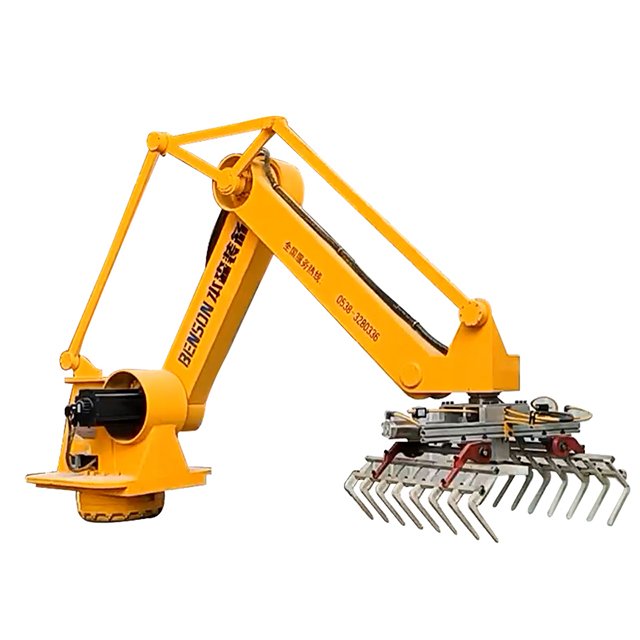Joint robot palletizer
Main classification
According to the structure of the joint robot classification:
1. Five-axis and six-axis joint robots
It has five or six rotating axes, similar to a human arm.
Applications include loading, unloading, painting, surface treatment, testing, measurement, arc welding, spot welding, packaging, assembly, chip machine tools, fixing, special assembly operations, forging, casting, etc.
2. Pallet joint robot
Two or four rotating axes and a positioning locking device for a mechanical gripper.
Applications include loading, unloading, packaging, special handling operations, pallet transportation, etc.
3. Planar joint robot SCARA
Three parallel axes of rotation and one linear axis.
Applications include loading, unloading, welding, packaging, fixing, coating, painting, bonding, packaging, special handling operations, assembly, etc.
In addition, it can also be classified according to the nature of the work of the joint robot, which can be divided into many kinds, such as: handling robots, spot welding robots, arc welding robots, painting robots, laser cutting robots and so on.
Advantages and disadvantages
Advantages:
It has a high degree of freedom, 5 to 6 axes, suitable for almost any trajectory or Angle of work
Can be programmed freely, complete fully automated work
Improve production efficiency, controllable error rate
Replace a lot of complex work that is not suitable for human completion and harmful to health, such as spot welding of automobile shell
Cons:
High prices lead to high initial investment costs
The extensive preparatory work before production, such as programming and computer simulation processes, takes a long time.
The multi-jointed machine is similar to a human arm and is characterized by its ability to move flexibly like a human hand. For example, when encountering an obstacle, the multi-joint robot can bypass the obstacle to reach the target, which is difficult for the general polar or cylindrical coordinate type industrial robot. If some special movements (crank motion) are required to be completed, the multi-joint robot is also easier to complete. A multi-jointed robot can also move from one point to another in as little time as a human hand. If a multi-jointed robot is equipped with tactile and force sensors in its hands and wrists, it can do more and more complex work. In order to realize the flexible action of multi-joint robots, two major problems need to be solved: control and structure. When a joint in the arm of a multi-joint robot rotates at an Angle, the other joints and their connecting rods will produce a movement in space. Accordingly, the claw reaches a new position, and the direction (attitude) of the position is also changed. Therefore, the general multi-joint robot needs to be controlled by computer. The robot has Angle detectors on each joint. Given the rotation Angle of each joint, the problem of obtaining the spatial position and attitude of the hand claw is called the analysis problem of motion control. On the contrary, given the position and attitude of the hand claw, the problem of how much Angle each joint connecting rod should rotate is called the synthesis problem of motion. The key of these problems is how to use the computer to carry out the above transformation and calculation.


























